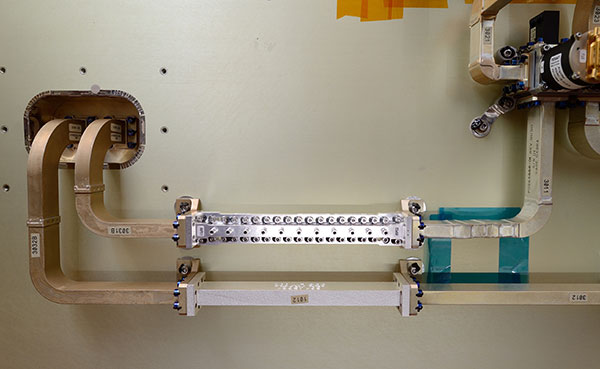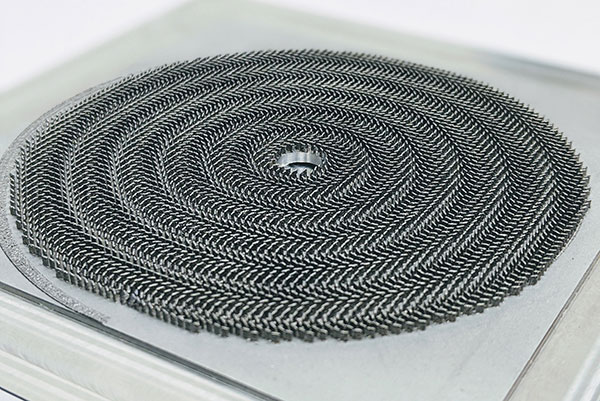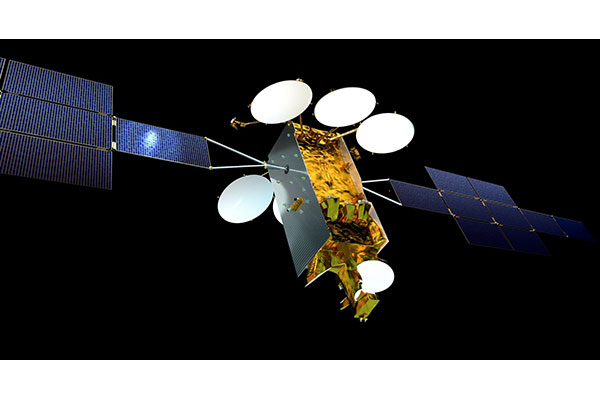
The 3D printed RF filter designed by Airbus Defence and Space integrated into the satellite payload. The new filter reduces weight by 50% over the previous design. Images courtesy of 3D Systems.
Latest News
May 6, 2022
After significant impacts from COVID-19, the demand for satellite telecommunications services is rebounding to see strong growth. With this resurgence comes an increasing need to improve telecommunication satellite performance.
Sending a vehicle into a geostationary orbit can cost as much as $20,000 per kilogram, and the typical service life is 10-15 years. As such, technologies are required that can boost performance, reduce cost, weight and volume, and drive improvements across design and supply chain processes.

One increasingly important technology driving aerospace innovation is additive manufacturing (AM). With greater design and manufacturing flexibility, AM offers compelling opportunities to revolutionize critical elements of the aerospace workflow.
Design Simplification
One exciting application of AM is its use for radio frequency (RF) passive hardware in telecommunications satellites. This family of parts can receive, carry, filter and transmit RF signals from earth to a satellite and back.
To enable communication with very weak signals, satellites must be equipped with the most efficient transmission technology possible, including directional antennas, filters and waveguides. The antennae receive and transmit signals from and to Earth. The waveguides transfer the RF signals inside the satellite with very low losses. The filters minimize signal noise from unwanted frequencies. These hardware elements feature highly complex designs and have exacting requirements for dimensional control, weight, volume and surface quality.
When these assemblies are produced using traditional manufacturing, they require extremely specialized personnel and multiple processes such as extrusion, machining, welding and manual assembly. Lead times are very long and costs are very high.
In recent years, engineers have applied AM to RF components. Engineers are no longer limited by conventional manufacturing and assembly processes and have dramatically greater flexibility to tailor RF components for performance and system-wide efficiency. The benefits are profound: improved RF performance, lower weight and volume, and large reductions in part count through unitization.

In collaboration with NASA’s Jet Propulsion Laboratory and the Univ Rennes, CNRS, IETR - UMR 6164, 3D Systems produced several thousand elements of this Metasurface (MTS) antenna on a single baseplate.
Pushing the Boundaries
Direct metal printing (DMP) has sparked innovation in RF design. Industry leaders are rethinking entire subsystems and producing them as highly unitized structures through the power of additive manufacturing. Unitization drives many benefits. Fewer parts mean fewer interfaces in the RF transmission chain resulting in lower overall system losses. Unitization naturally leads to part count reduction, reduced weight and volume, faster and more efficient assemblies, reduced costs for quality control and a streamlined supply chain.
In one use case, the DMP process manufactured a passive RF filter for on-orbit use. The resulting RF filter was a single part, versus 39 parts in a conventional unit. The AM-produced filter weighed 50% less than the conventional filter.
With respect to satellite design, weight savings are seen as the most desirable optimization. Weight is critical for launch considerations, but overall volume is important as well. Volume reduction potentially allows a satellite to accommodate more telecommunications channels inside a given volume and weight envelope dictated by the launch constraints associated with the selected launch vehicle. The more compact an RF payload design is, the more channels can be added, which enables more services.
DMP also provides RF designers with the opportunity to use shapes that are not possible with conventional manufacturing processes. This is of particular use in RF filter design. With DMP, very efficient filter designs using highly organic, contoured shapes can be manufactured to optimize performance.
These capabilities can be effectively demonstrated by briefly exploring a real-world use case.
Functional Design
Airbus Defence and Space partnered with 3D Systems to produce the first 3D printed RF filter that was tested and validated for use in commercial telecommunications satellites. The project built upon research funded by the European Space Agency (A0/1-6776/11/NL/GLC: Modelling and Design of Optimised Waveguide Components Utilising 3D Manufacturing Techniques), and demonstrates AM’s ability to enable new design innovation for aerospace parts that haven’t changed appreciably in decades.
RF filters are traditionally designed based on standardized element libraries, such as rectangular cavities and waveguide cross-sections with perpendicular bends. Shapes and connections are dictated by typical manufacturing processes such as milling and electrical discharge machining (EDM).

As a result, cavities for RF filters typically must be machined from two halves and bolted together. This increases weight, adds an assembly step to production time and requires extra quality assessment. Designing the parts for additive manufacturing enabled Airbus Defence and Space to explore complex geometries at no additional manufacturing cost.
A high-capacity satellite such as the Eutelsat KA-SAT manufactured by Airbus Defence and Space carries nearly 500 RF filters and more than 600 waveguides. Many are custom-designed to handle specific frequencies.
Building upon its initial work, the company’s manufacturing team in Portsmouth, UK, developed innovative designs for the additive manufacturing of switch assembly networks with AM consultation and production support from 3D Systems. 3D Systems was brought onto this project early to provide input and support for application development and prototyping, with continued engagement throughout qualification and industrialization.
AM was selected for this project due to its support of design freedom, weight reduction, part performance optimization and the schedule reduction. Airbus also cited major labor savings during assembly, which enabled their teams to focus on more value-added tasks, as well as a significant reduction in the number of individual parts required as reasons for selecting AM. The RF passive hardware is designated for two Eurostar Neo spacecraft that will join the in-orbit fleet of Eutelsat.
Airbus Defence and Space is just one manufacturer that is realizing the benefits of AM to reduce weight, boost performance and lower cost while achieving greater consistency and reliability in final aerospace components.
Industry leaders worldwide are integrating AM into their production workflows to not only scale capabilities but to push the limits of innovation. As demands in the aerospace and defense industry evolve, AM will help these leaders remain at the forefront of change, developing advanced technology and materials that will take the industry to new heights.
Dr. Michael Shepard is vice president, Aerospace & Defense Segment, 3D Systems.
Reference: D. González‐Ovejero, O. Yurduseven, G. Chattopadhyay, and N. Chahat, “Metasurface Antennas: Flat Antennas for Small Satellites,” in CubeSat Antenna Design, IEEE, 2021, pp.255-313.
More 3D Systems Coverage
Subscribe to our FREE magazine, FREE email newsletters or both!
Latest News






